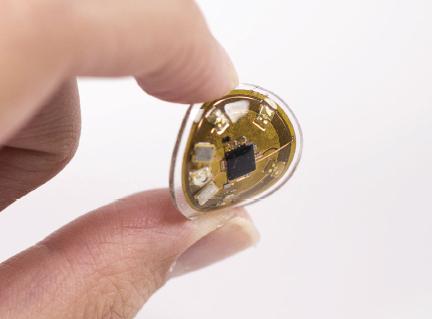Tiny UV sensor marks big breakthrough in fight against sunburn and skin cancer, scientists claim
Fingernail-sized technology could last forever, say researchers

A tiny, wireless, battery-free sensor can recognise solar radiation – and could even stop people dying from skin cancer, according to the scientists who created it.
The small monitoring device is just the size of a fingernail but allows the people using it to track doses of ultraviolet radiation when they are outside.
Over-exposure to UV can increase the risk of a variety of skin cancers, which cost more than $8bn (£6.3bn) a year in the US alone. Experts fear that the occurrence could reach epidemic proportions and that monitoring them could be a useful way of avoiding further harm.
But being exposed to UV light can also be helpful, meaning that it is important to be sure just how much people are around.
At the moment, UV monitoring devices tend to have issues such as limited battery life, leading them to see little use in the technology industry and among people.
But the new research, done by scientists at Northwestern Medicine and Northwestern's McCormick School of Engineering offers a new way of getting around those issues. It involves special use of physics that could be applied to create versions of the monitors that would be much cheaper and easier to make while getting around the longstanding issues with such technology.
It can even monitor three different wavelengths of light, allowing for researchers to separate the different kinds of exposure. It can measure white light exposure that can be useful for people with seasonal affective disorder, for instance.
The device is so long-lasting and resilient that it should be able to last forever, the researchers said, after trying and failing to destroy it.
"From the standpoint of the user, it couldn't be easier to use – it's always on yet never needs to be recharged," said John Rogers, who led the research group. "It weighs as much as a raindrop, has a diameter smaller than that of an M&M and the thickness of a credit card. You can mount it on your hat or glue it to your sunglasses or watch."
Join our commenting forum
Join thought-provoking conversations, follow other Independent readers and see their replies
Comments
Bookmark popover
Removed from bookmarks